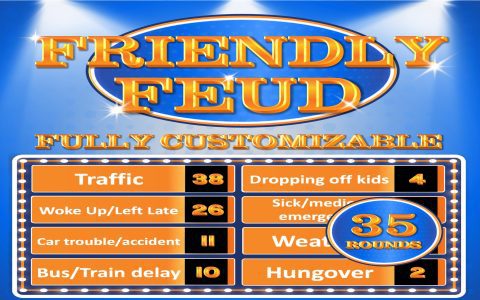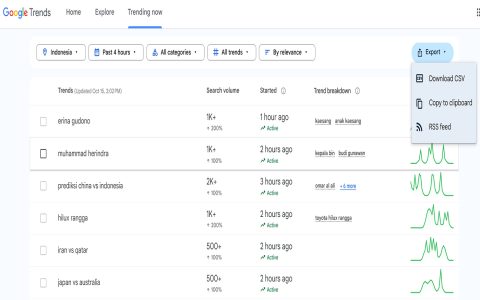Creating an energetic Family Feud game quickly requires smart preparation and adaptable templates. Focus on the core experience.
Essential Templates (Digital or Printable)
- Title Slide: Game title, your logo/subtitle.
- Survey Question Slide: Clear statement of the survey prompt given to respondents (e.g., "Name something people hide.").
- Answer Reveal Slides: One slide per survey question showing numbered answer rows (e.g., "1. KEYS (42)" down to the #1 answer). Standard layout features descending point values.
- Fast Money Question Slides: Two slides per pair: one for the question prompt, another to reveal answers/points afterward.
- Scoreboard Slide: Simple place to track two teams' points (e.g., Team A: 0, Team B: 0). Updateable.
- Strike Template: Large, bold "X" graphic slide. Show after three wrong answers.
- "Top Answer" Slider: Iconic graphic, optional but adds flair. Slides in/out during reveals.
Speed Prep Tips
- Leverage Existing Survey Data: Use legitimate Family Feud survey results found online or crowdsource simple questions ("Name a red fruit") among friends quickly via chat apps. Avoid complex research.
- Simple Software: Use presentation tools (PowerPoint, Google Slides, Keynote). Duplicate the core slides (Answer Reveal, Strike) for each new question.
- Reusable Graphics: Pre-make "X", scoreboard, "Fast Money", and "Top Answer" elements. Copy-paste them into slides as needed.
- Minimal Text: Keep questions concise. Answers should be short keywords (e.g., "Money", not "They hide their money").
- Pre-Print Scorecards (Optional but Fast): For physical play, print answer sheets for the survey questions for the host.
Efficient Hosting
- Decide Rules Upfront: Clarify pass/play, stealing, and strike rules briefly before starting. Stick to standard TV rules for speed.
- Dedicated Scorekeeper: Assign someone (not the host) to track points and strikes live. Crucial for pace.
- Energy & Pacing: Keep rounds moving. Prompt teams firmly ("Team A, give me an answer!"). Don't linger on missed answers.
- Embrace Imperfection: Focus on fun, not pixel-perfect slides. Adjust points slightly on the fly if needed for flow.
- Use the "Strike" Slide Loudly: Immediately show the large "X" after each wrong answer to build tension.
- Prepare Fast Money: Have 5 quick, diverse questions ready.
Key: Prioritize functional templates and known survey answers over elaborate design. Delegate scoring, keep the energy high, and pivot quickly.








